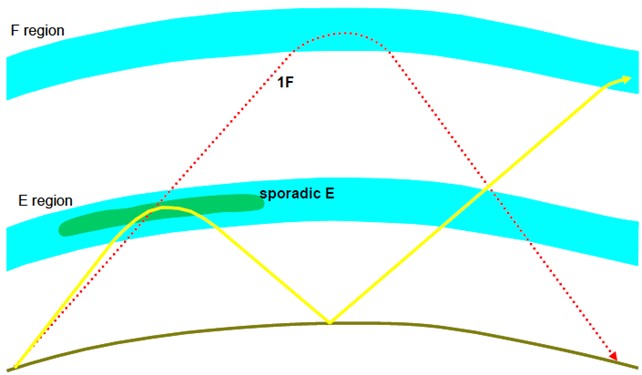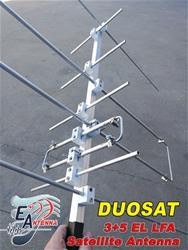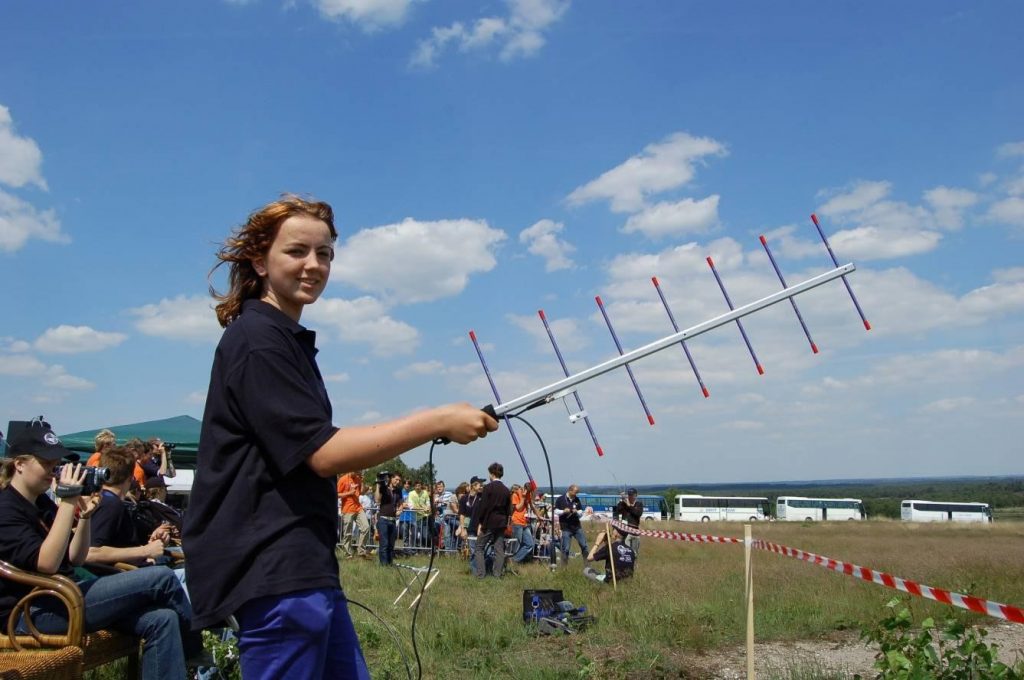We all get in ruts. It’s easy to just keep doing what we always do. Often it takes a major external change to stimulate us to make changes and try new things. This year’s COVID-19 social distancing and its effect on ARRL Field Day (FD) may be that stimulus. Instead of club-operated FD sites, many Hams will be doing solo operations this June 27 and 28. For those with Technician (or legacy Novice) Class Licenses, operating solo for FD has additional challenges.
Traditionally, participating in an HF-focused Field Day by those with limited HF license privileges was an obstacle. Many Technicians focus most of their activity on 2M and 440 FM repeater operations with occasional forays into simplex FM operations. Maybe you have upgraded to General or Extra but are still limiting your operations to an FM HT or mobile rig. If so, this article is also for you. Whether you choose to operate on Field Day or not, I would like to share ways to expand your Ham Radio activities.
Try 6 Meters, the Magic Band
The 6M band can provide a variety of activities for Techs. Like 2M, there is some FM activity and even a few repeaters on 6M (above 51.0 MHz), but let’s explore the lower portions of the band. 6M single sideband (SSB) voice activity from 50.125 to 50.3 can provide local contacts without enhanced propagation, similar to 2M. But when the magic kicks in, contacts across the U.S. or even DX are possible. The magic can be produced by one of two types of enhanced propagation: solar cycle-dependent F Layer ionization, like the HF bands, and Sporadic E Layer propagation (also known as E Skip or Es). Sporadic E can occur at any point in the 11-year sunspot cycle and throughout the year, although there tends to be more during summer months. In addition to SSB, there has been an explosion of the recently developed FT8 digital mode (more on this later).

If you own a recent model HF transceiver, there is a good chance it has 6M capability. If you don’t have a radio with 6M, DX Engineering has a wide variety of radios available with 6M SSB, including Icom’s IC-7100 and IC-7300, Yaesu’s FT-991A and FT-891, and Kenwood’s TS-590SG.
In addition to a 6M-capable radio, you will need an antenna. You can start with a simple 6M resonant dipole, but because beams for 6M are both fairly compact and very effective, you might want to consider upgrading. The Cushcraft A503S 6M Yagi Beam Antenna has a six-foot boom and weighs only seven pounds, so it is easily turned by a small TV antenna rotator on a mast. Another option is the MFJ-1836 HF Cobweb Wire Dipole Antenna which provides 20/17/15/12/10/6M coverage. Finally, the Create CLP-5130-1N VHF/UHF Log-Periodic Antenna provides continuous coverage from 50 to 1300 MHz.
10 Meter SSB and Digital
The 10M band provides opportunities for long-distance SSB DX when we are at the peak of the sunspot cycle. Unfortunately, we are now at the bottom of the 11-year cycle. The good news is this means we are on the way back up. While we wait, 10M also sometimes benefits from E Skip. In addition to SSB on 10M, Techs can also work digital modes including RTTY, PSK, and FT8.
Today, most digital modes use your computer’s sound card (or one built into the radio) for modulation and demodulation of these modes. There are a variety of free software programs available to operate these modes, including WSJT-X, FLdigi, and MMTTY.
FT8 and FT4 are two of the modes that use the WSJT-X suite to communicate. One of the big advantages of these modes is their ability to make contacts with extremely weak signals, meaning contacts even when bands are not in great shape for phone contacts. Here are three articles with details on FT8 and FT4:
If you are shopping for a new radio, a built-in sound card makes digital modes a snap with a simple USB cable connection to your computer (see the chart above for radios with this feature).
Satellite Operation
Most Amateur Radio satellites use 2M and 440 MHz (with a few using 1.2 GHz) with full privileges for Techs. Low-orbiting FM satellites can even use your existing dual-band HT. For your satellite operations, the EAntenna DUOSAT Handheld Antenna is available from DX Engineering.

Read these articles for details on satellite operations:
● Satellite Basics (Part 1): Guide to Ham Radio Satellite Operating
● Satellite Basics (Part 2): Making QSOs via Satellite
● Full Duplex: The Key To Satellite Success
● Getting Started on Low Orbit FM Satellites

HF CW for Techs
Many Techs do not realize they already have HF privileges on 80, 40, and 15 meters. These are the old Novice CW allocations. All classes of amateurs in the U.S. have these privileges, but because code proficiency is no longer required to get your license, most Techs and even other new licensees of all classes have limited or no CW skills. I have put together a slideshow, “Having Fun with Morse,” that explains some of the advantages of CW operations, how to learn CW, and how to use these privileges with limited code skills by leveraging CW decoding software and the built-in CW decoding found in some radios (see the table above for some of the radio models that have this feature).
Achieving More on 2M/440
Even if you limit your new Tech activities to 2M/440 MHz, there are a number of new things to try. Take a look at the OnAllBands article, DXing with a Handheld: What You Need to Know. This article provides ideas for greatly extending your range on FM simplex. Other FM activities might include moving away from analog FM and getting in DMR, D-STAR, C4FM or other VHF/UHF FM digital modes. This video from Ken, KA8ODA, Establishing Hot Spots for Your D-STAR Radio, is a good place to start. You might also consider trying 2M and/or 430 SSB, two bands that can complement your 6M activity in VHF/UHF contesting.
Opportunities to Test Your Newly Expanded Tech Operating
There are a few upcoming events where you can try out your expanded Tech operating, including the ARRL September VHF contest and ARRL Field Day. I have put together a slideshow for this year’s Field Day operation, “Field Day in Social Distancing,” that includes a discussion of Technician solo operations. Finally, there is the summer-long pursuit of waiting for 6M to blossom into activity with E Skip. Sean, KX9X’s excellent article, The Hows and Whys of Operating on Two Meters or Six During the Summer Months, gives tips on operating and knowing when the band is active.

